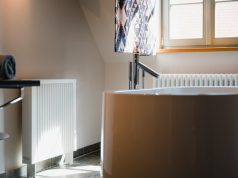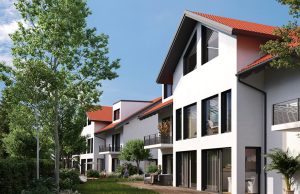In the drive for low-carbon construction, materials and mechanical systems often receive the most attention. Yet the smaller details (such as door hardware, window fittings, and other elements of architectural ironmongery) play an equally critical role in a building’s performance. High-quality ironmongery can significantly improve airtightness, reduce energy loss, and extend the lifespan of key components, helping projects meet sustainability targets and operate efficiently for decades.
Airtightness and Energy Performance
Airtightness is essential for controlling heat transfer and preventing unwanted draughts. Even small gaps around doors and windows can undermine the performance of high-spec insulation or advanced heating systems. Precision-engineered hinges, seals, and locking systems ensure that doors and windows close securely, maintaining a consistent barrier against air leakage.
Poorly fitted or low-quality ironmongery can allow frames to warp or seals to degrade, creating gaps that lead to heat loss and higher energy bills. By contrast, premium fittings maintain their alignment over time, preserving the tight seals needed to keep warm air in and cold air out. This reduces the energy required to heat or cool the building, lowering both costs and carbon emissions.
Durability and Lifecycle Benefits
Buildings designed for long service lives require hardware that can withstand years of use without failing. High-traffic areas such as schools, offices, and residential blocks place heavy demands on hinges, handles, and closing mechanisms. Inferior components are prone to wear, corrosion, or mechanical failure, which can compromise safety and lead to costly repairs.
Investing in robust ironmongery reduces maintenance requirements and extends the overall lifecycle of the building. Components made from high-grade stainless steel or treated with corrosion-resistant finishes are particularly valuable in coastal or industrial environments, where moisture and pollutants accelerate deterioration. Longer-lasting hardware not only saves money but also reduces waste by minimising the need for replacements.
Supporting Sustainable Construction
Specifying high-quality ironmongery complements other low-carbon strategies. Products that carry recognised certifications for durability and performance can contribute to sustainability ratings such as BREEAM or LEED. Reliable hardware also helps building managers maintain operational efficiency, ensuring that doors and windows perform as intended throughout their lifespan.
Specialist suppliers such as Ironmongery Experts provide a wide range of products designed to meet these standards. By sourcing hardware from experienced professionals, contractors can be confident that every hinge, lock, and seal contributes to the project’s energy and durability goals.
Precision Matters
The installation of ironmongery is just as important as the product itself. Even the best hardware will underperform if it is not correctly fitted. Working with knowledgeable suppliers and installers ensures that tolerances are maintained and that seals and closing mechanisms function as designed. This attention to detail prevents premature wear and maintains airtightness over the long term.
Small Components, Big Impact
Energy-efficient buildings are the result of many interconnected factors, and ironmongery is a vital piece of the puzzle. By selecting high-quality fittings, architects and contractors can improve airtightness, reduce energy waste, and extend the life of the building envelope. The result is a structure that performs better, lasts longer, and supports the UK’s commitment to reducing carbon emissions.














